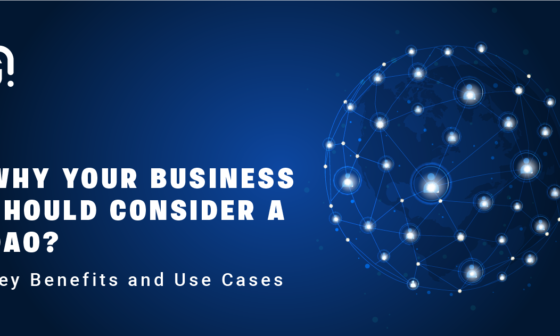In today’s globalized world, cross-border payments have become increasingly important. However, traditional financial systems often struggle to meet the demands of these transactions, leading to inefficiencies and high costs. This is where blockchain technology comes into play. Blockchain has the potential to revolutionize cross-border payments by offering speed, cost-effectiveness, transparency, and security. In this article, we will explore the benefits, use cases, limitations, and future prospects of blockchain in cross-border payments.
Speed and Efficiency
One of the major advantages of using blockchain for cross-border payments is the speed at which transactions can be processed. Unlike traditional methods that require multiple intermediaries and banking systems, blockchain enables direct transactions between parties, eliminating the need for lengthy processing times. With blockchain, cross-border payments can be completed in a matter of minutes or even seconds, providing significant improvements in efficiency.
Cost-Effectiveness
Blockchain technology can significantly reduce transaction costs associated with cross-border payments. Traditional methods often involve high fees due to the involvement of intermediaries and currency conversions. With blockchain, these intermediaries are bypassed, resulting in lower fees. Additionally, cryptocurrencies, which are commonly used in blockchain-based payments, offer lower conversion fees and exchange rates compared to traditional banking methods.
Transparency and Security
Blockchain provides a transparent and immutable record of transactions, ensuring trust and reducing the risk of fraud. Every transaction is recorded on the blockchain, creating a permanent and tamper-proof audit trail. This transparency enhances security and allows participants to track and verify payment histories. By leveraging encryption techniques, blockchain ensures the anonymity and privacy of participants, making transactions secure and reliable.
Accessibility and Financial Inclusion
Blockchain technology has the potential to provide financial inclusion to individuals who do not have access to centralized financial systems. With just an internet connection, anyone can participate in cross-border transactions, enabling economic empowerment worldwide. This is particularly beneficial for individuals in emerging markets or regions with limited access to traditional banking services.
Market Expansion and New Opportunities
By leveraging blockchain technology, businesses can access new markets and demographics that were previously difficult to reach. Blockchain-based cross-border payments open up opportunities for global trade, e-commerce, and investment, enabling businesses to expand their reach and tap into new customer bases. This can lead to increased growth, revenue, and market share.
Use Cases of Blockchain in Cross-Border Payments
Intra-Company Payments
Companies often need to transfer funds within their own organization to fulfill operational and regulatory liquidity obligations. When these transactions involve transferring money between different national banking systems, blockchain can offer faster processing compared to traditional payment systems. Additionally, companies can address liquidity difficulties that arise from moving funds from emerging markets by utilizing fiat-pegged stablecoins.
Cryptocurrency Payments
Blockchain-based payment solutions greatly simplify the remittance process, resulting in faster and more cost-effective transfers of funds. This is particularly relevant when considering transfers to countries with significant financial exclusion challenges. Cryptocurrencies offer a borderless and accessible means of transferring funds, bypassing traditional banking systems.
E-commerce
Blockchain payments have become widely accepted and reliable for making secure and transparent online purchases. By minimizing the possibility of fraudulent activities, blockchain instills greater trust and confidence in customers during the payment process. While blockchain payments were initially applied in consumer transactions, they are gaining traction as a B2B sales channel, enabling seamless cross-border transactions between businesses.
Trading Platforms
By leveraging fiat-collateralized stablecoin rails, trading platforms can execute funding payments and payouts to and from global markets rapidly and inexpensively. Blockchain technology ensures fast and secure transactions, providing liquidity and efficiency to trading platforms.
Supply Chain Payments
Utilizing fiat-collateralized stablecoin rails enables efficient funding payments and payouts in global supply chains. Blockchain technology provides transparency and security, ensuring that transactions are recorded and verified throughout the supply chain process.
Decentralized Crowdfunding and Charity Payments
Blockchain-based payment systems enable decentralized crowdfunding, allowing people from different parts of the world to contribute funds directly to various initiatives or projects without the involvement of intermediaries. This approach promotes transparency and accountability by ensuring that all transactions are visible to the participants.
Micropayments
Blockchain technology facilitates micropayments, which refer to small payments or transactions made online. These include tips, royalties, bank account credit card verification, pay-per-click advertising, and more. Blockchain’s low transaction fees and fast processing times make micropayments more feasible and cost-effective.
Advantages and Limitations of Blockchain for Cross-Border Payments
Advantages
- Speed: Blockchain-based solutions enable near-instantaneous transfer of funds across borders, reducing settlement times compared to traditional methods.
- Cost-effectiveness: By eliminating intermediaries, blockchain systems reduce transaction fees associated with cross-border payments. Cryptocurrencies offer lower conversion fees and exchange rates.
- Transparency: Blockchain provides a transparent and immutable record of transactions, reducing the risk of fraud and enhancing trust in the payment process.
- Accessibility: Blockchain-based systems offer financial inclusion to individuals without access to centralized financial institutions.
- Market Expansion: Blockchain technology enables businesses to access new markets and demographics, promoting growth and revenue.
- Security: Blockchain uses encryption to make payments anonymous and secure, ensuring the privacy of participants.
Limitations
- Regulatory Frameworks: The regulatory landscape for blockchain and cryptocurrencies varies across countries, creating uncertainties and compliance challenges.
- Scalability: Scalability is a challenge for blockchain networks, especially public ones like Bitcoin and Ethereum, resulting in slower transaction processing speeds and higher fees.
- Interoperability: Blockchain networks often operate in silos, limiting their ability to seamlessly communicate and transact with each other.
- Volatility and Liquidity: Cryptocurrencies are known for their price volatility, and ensuring sufficient liquidity in destination currencies can be challenging.
- User-Friendly Interfaces: Blockchain-based payment systems may require technical expertise, hindering adoption among individuals and businesses with limited technical knowledge.
- Energy Consumption: Blockchain operations can be energy-intensive, raising concerns about environmental impact.
- Reversibility and Dispute Resolution: The immutability of transactions on the blockchain poses challenges related to transaction reversibility and dispute resolution.
The Future of Blockchain in Cross-Border Payments
Efforts are being made to overcome the limitations of blockchain technology for cross-border payments. Alternative blockchain platforms and protocols are being explored to improve scalability and transaction processing speeds. Collaboration between governments, financial institutions, and blockchain industry stakeholders is crucial for establishing clearer regulatory frameworks and standards. The development of interoperability standards can enable seamless communication between different blockchain networks. Promoting the use of stablecoins can mitigate volatility and liquidity concerns. User-friendly interfaces and intuitive applications can enhance accessibility. Exploring energy-efficient consensus mechanisms can address concerns about energy consumption. Establishing dispute resolution mechanisms specific to blockchain-based cross-border payments can provide a framework for resolving issues.
As the technology continues to evolve and regulatory frameworks become clearer, blockchain-based cross-border payments may become more viable and widespread in the future. The potential benefits of blockchain technology, including speed, cost-effectiveness, transparency, accessibility, security, and market expansion, make it an attractive solution for transforming the global financial landscape. By addressing the limitations and implementing the suggested improvements, we can enhance the adoption and effectiveness of blockchain-based cross-border payment systems. This will lead to a more efficient and inclusive global financial landscape, enabling individuals and businesses worldwide to benefit from fast, secure, and cost-effective cross-border transactions. With continued innovation and collaboration, blockchain technology has the potential to reshape the way we conduct cross-border payments and create a more connected and efficient global economy.
Conclusion
At Avolox, we are your trusted blockchain and web3 partners. We offer blockchain development services to help businesses leverage the potential of blockchain technology in cross-border payments and beyond. Contact us today to learn more about how we can assist you in your blockchain journey.







